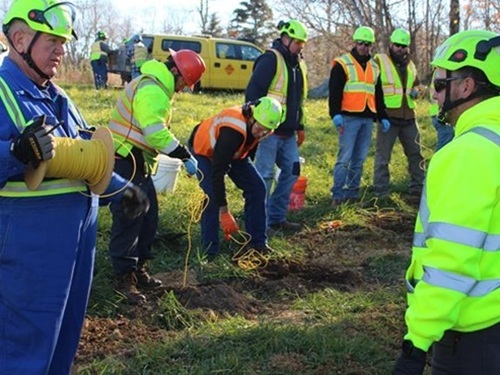The Kansas Department of Transportation is starting preliminary engineering work on 40 new highway modernization and expansion projects; the first such projects to move forward under the Eisenhower Transportation Legacy or IKE program; approved by the state legislature and signed into law in early April.
[Above photo by the Kansas DOT.]
“These transportation investments come at a critical time for our state’s economy. A robust development pipeline will help jump start our economic recovery by creating jobs and allowing the state to take advantage of potential federal stimulus dollars,” explained Governor Laura Kelly (D) in a public Zoom meeting on May 14.

“We have not added any major highway projects since 2011 and having a robust development pipeline is critical to economic recovery of our state,” she added. “These projects are located in every region of our state; they are practical, right-sized, and can be advanced quickly to construction.”
Gov. Kelly noted those projects offer the potential to provide a host of short- and long-term benefits for Kansas as well.
“Short term, they put people to work; with a 14.7 percent [state] unemployment rate, we need to do wall can to put people back to work safely. We need every potential employment tool at our disposal,” she pointed out. “Long term, [those projects] will make our transportation system more efficient, driving down the costs of shipping goods while helping attract new businesses to our state.”

“A modern transportation system moves people, freight and technology and these 40 projects will allow us to do all those things better in every region of the state,” added Julie Lorenz, Kansas DOT’s secretary, in a statement. “We’ve selected smaller projects, which can advance to construction quickly, and larger projects that will employ many people in all phases of development or construction.”
She noted during the Zoom conference that IKE is a “rolling program,” which means major highway modernization and expansion projects will be selected every two years rather than once a decade as previous programs did.
“This program also lets us address most pressing needs first and adjust revenues as needed,” Lorenz explained. “This transportation program is tailor-made for this moment.”
Other key aspects of the new IKE program include:
- Placing an emphasis on right-sized, practical improvements. For example, designing and building passing lanes rather that constructing four-lane expressways where applicable.
- The creation of new partnership programs such as the “Cost Share” and “Local Bridge” initiatives between the state and local governments to address more transportation infrastructure needs.
- Increased investments in broadband and new technologies.
- Continued commitment to multimodal transportation with investments in public transit, aviation, short-line rail, plus bike and pedestrian programs.
Lorenz pointed out that this infrastructure “development pipeline” created by the IKE program includes all the phases of work prior to construction, such as design, acquiring right-of-way, moving utilities, etc.
“While the Kansas DOT is not committing to constructing these 40 projects, it will allow the necessary advance work to begin,” she explained.
“It will allow us to be as well positioned as we can be to take advantage of opportunities at the federal level. This is only the beginning and only a portion of what IKE will provide Kansas – we are just getting started,” Lorenz added. “This is about way more than just building roads and bridges – it is about investing in our communities today and for the long term.”
 States
States
NCDOT Staff Participate in ‘Explosive’ Technical Training
December 19, 2025 States
States

